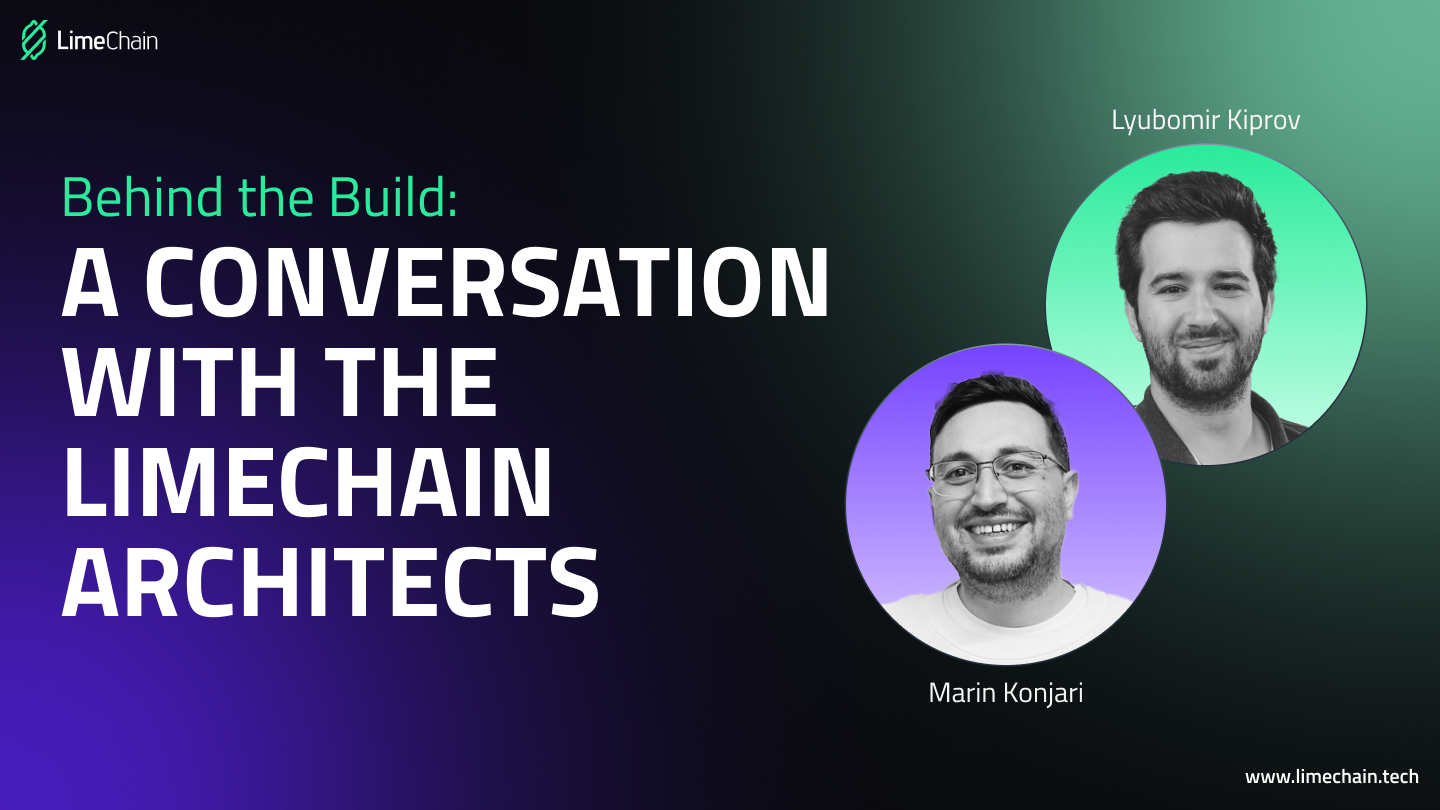By
Niki Vasilev
August 13, 2025
4 Min Read

We sat down with our senior blockchain architects at LimeChain, Marin Konjari and Lyubomir Kiprov to explore how the team approaches blockchain projects — from the very first client meeting to high-stakes DeFi systems. What emerged was a refreshingly people-first, deeply methodical process that reveals what it really takes to build meaningful products in the space.
It always starts with understanding the client’s business context — not the tech. Before we even look at the project, we try to get a sense of their internal dynamics: their priorities, how their teams are structured and how people communicate. It helps us understand what kind of project they can realistically take on.
Our goal at this stage is to figure out how to maximize the value we can deliver. We approach it from a psychological and strategic standpoint, not just technical.
Once we have that baseline, the first part is fairly high-level — understanding what the client wants to achieve. Then we start fleshing out the idea. There’s usually more than one way to approach a problem, and we use our understanding of the client and their context to guide the path forward.
After that, things get more structured. We look at the project from several angles: from the end user’s perspective, from the admin’s, and from an operational point of view. What kind of hardware or infrastructure will it need? What are the functional and non-functional requirements? That’s when a full system starts to take shape — how it works, who uses it, and what’s required to make it a reality.
At this point, we can begin estimating the size of the team, the timeline, and the internal resources needed. We also bring in specialists who focus on security, testing, and performance to define critical parameters like speed and volume early on.
That actually happens during the discovery process I just described. When we take the time to explore the client's structure, goals, and communication style, we sometimes start to spot misalignments between their initial request and what they actually need.
That’s why we never rush into implementation — we’re trying to solve the right problem, not just the first one they mention.
Communication is everything. We work hard to reduce the complexity of what we do so that it makes sense to the people we’re working with — even if they’re not technical. Metaphors go a long way here. We are patient and try to be as creative and clear as possible.
Our Project Managers (PMs) and Product Owners (POs) are key to this. They act as intermediaries between the technical team and the client. The PM, in particular, plays the role of a client advocate inside the team — helping translate timelines, feasibility, and decisions in a way that supports both sides.
Designing a DeFi protocol requires a heightened level of rigor, both technically and economically. DeFi deals directly with users’ capital — often large amounts, which makes the stakes much higher.
From a technical standpoint, DeFi systems tend to be more complex. They often involve integrating multiple external systems — such as oracles and other protocols — and require a deep understanding of financial mechanisms, not just blockchain development.
In DeFi, the logic behind how funds flow, how interest accrues, or how prices are fetched and used must be bulletproof. Additionally, testing and auditing become even more critical. We usually go through multiple layers of testing — integration tests, internal audits and external audits before any deployment.
There’s a wide range, but some of the most common are:
These kinds of questions tell us a lot about how well the client understands the space — and how ready they are to move forward.
Lately, we’ve been seeing a lot of interest in Asset Tokenization and Investment Vehicles. Both areas offer interesting technical and strategic challenges — they’re pushing the boundaries of what’s possible in DeFi, but they also demand a solid understanding of both tech and finance.
Clients who bring layered ideas benefit the most from working with us, because we have cross-functional expertise and can bring all of it to the table.

